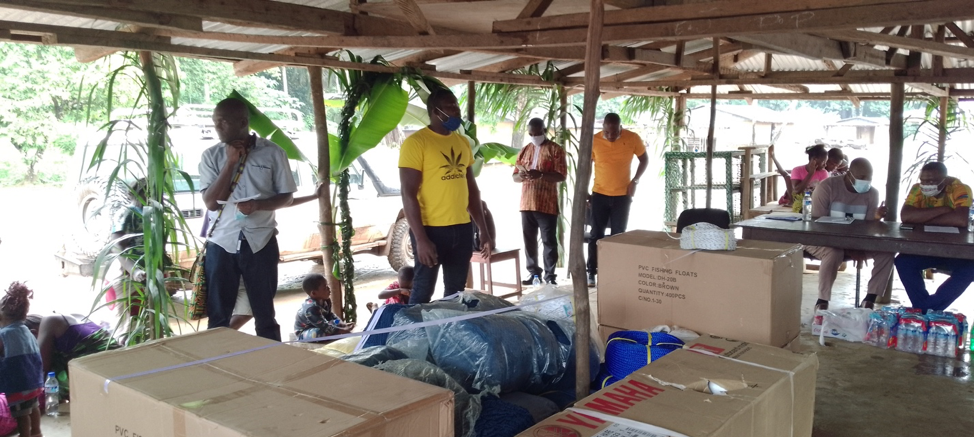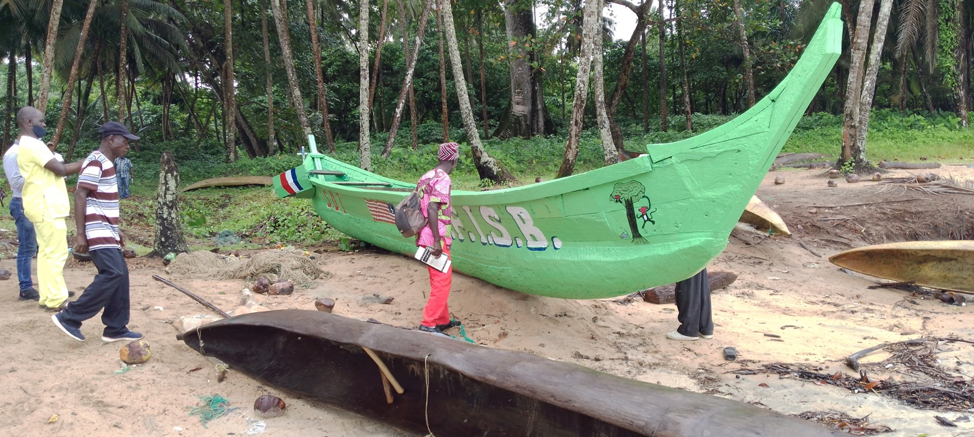Banner Image: The Sustainable Development Institute (SDI) donated this canoe to the Barconnie-Harmonville Community Forest to help it conserve its forest. Photo credit: SDI
By William Selmah
BUCHANAN, Grand Bassa County – Since the Barconnie-Harmonville Authorized Community Forest was established in 2017, it has found it difficult to sustain its conservation program. Illegal occupants cut down trees and harvest other forest resources there. Besides, residents find it difficult to survive through other means other than depending on the 123-hectare seafront woodland.
It is against this backdrop that Sustainable Development Institute (SDI) last week donated a fishing net, boat and accessories to the leadership of the community forest to support them in finding other ways to survive and keep their forest.
“Working with several communities, the whole question of alternative livelihood has often come in,” Wilfred Gray-Johnson, SDI executive director said in an interview following the presentation of the items to Barconnie-Harmonville Community Forest Management Body (CFMB). “If you don’t want the communities to access their forests, what is their alternative means of livelihood?” He added that the donation would help the fishing town catch enough fish to eat and sell.
Gray-Johnson further said SDI had plans to give at least 50 vulnerable households funds to repair their homes as part of a pilot project. They all, he said, will receive US$50 each for three months. The donation was a part of a memorandum the nongovernmental organization and the community signed earlier this year. It costs over US$12,000, with the fund from the Siemenpuu Foundation, based in Finland.
Opa Peter, the chief officer of the Barconnie-Harmonville CFMB, which manages the daily affairs of the forest, said the donation was a life-impacting gesture. He expressed hope that it would go a long way in impacting the residents of the area.

Mike Doryen, the managing director the Forestry Development Authority (FDA) urged the community to use the donated items for their intended purposes. “[I] only call on them to tell their leaders to be more accountable for the resources they have received for their people because accountability has been an issue. The resources belong to the entire community, not just the leader,” Doryen told The DayLight in an interview.
As part of activities to enhance their conservation endeavors of the Barconnie-Harmonville Authorized Forest, its leadership said there it had an enormous task of making townspeople understand the rationale behind conservation.
“This idea has never been introduced in our communities before,” Peter said. “Forest management is never easy to work, especially dealing with residents who have commercial interest.
“This area was gradually turning into savanna. Most of the towns in this community now are surrounded by trees. Before then, when there was heavy rain, many houses used to be affected.”
Conservation is a pillar of Liberia’s forestry reform. The country has promised to conserve 30 percent of its forest, one of Africa’s largest remaining rainforests. That process has led to the creation of nationals parks, including the Sapo National Park, the Gola National Forest and the Lake Piso Multiple Sustainable Use Reserve. But challenges mount, including agriculture, mining and logging concessions.
Conservation has also not taken root in communities. Barconnie-Harmonville is just one of few of the 47 authorized forest communities in Liberia that have chosen to conserve their forests.




